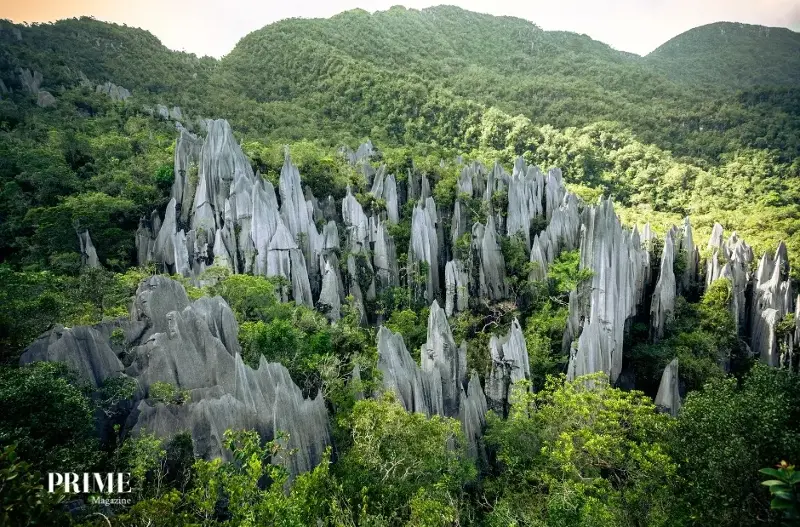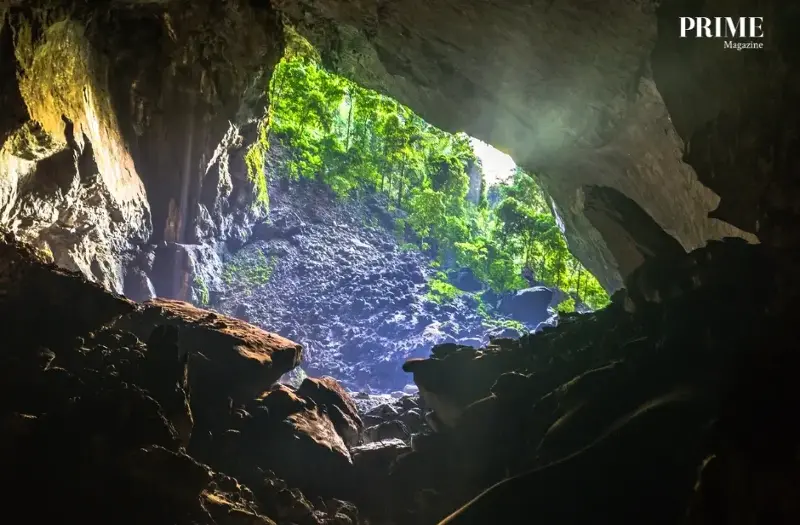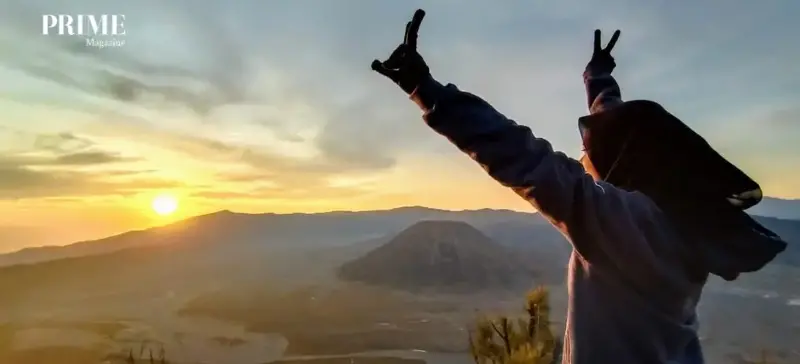Part 3 of the Prime.sg Ecotourism Series

The Pinnacles Rock Formation at Gunung Mulu National Park
Tucked deep within the lush rainforests of Sarawak lies one of Southeast Asia’s most extraordinary natural wonders — Gunung Mulu National Park. Known for its towering karst formations, pristine jungle trails and world-renowned cave systems, this UNESCO World Heritage Site is the perfect demonstration of how nature and responsible travel can coexist. As more travellers seek meaningful outdoor experiences close to home, interest in Gunung Mulu National Park ecotourism has grown rapidly. This guide shows you what makes Mulu so special and how to explore it sustainably.
Why Gunung Mulu National Park Ecotourism Stands Out
Gunung Mulu National Park covers nearly 545 square kilometres of tropical rainforest, limestone mountains and underground rivers. Despite being relatively close to Singapore, much of the park remains untouched due to its remote location and limited accessibility. These conditions make Gunung Mulu National Park ecotourism unique — every visitor must follow strict environmental regulations to help preserve the fragile ecosystems found here.
The park is home to unusual limestone pinnacles, rare plants, colourful insects, unique cave fauna and countless species of bats and birds. Its biodiversity rivals some of the world’s most famous eco-destinations, yet it remains less crowded and more serene.
Understanding Ecotourism Principles at Mulu
Like the other destinations in this series, Mulu follows essential ecotourism practices designed to protect nature and support local communities.
1. Conservation First
Visitors must walk on boardwalks to prevent soil erosion, remain on marked trails and follow the instructions of park rangers. Cave visits are timed and controlled to avoid disrupting wildlife.
2. Support for Indigenous Communities
Many guides and staff come from nearby Penan and Berawan communities. Choosing official park guides ensures that ecotourism revenue directly benefits the people who have stewarded this land for generations.
3. Education Through Experience
Guided tours highlight Mulu’s geology, rare species and cultural heritage. This educational approach is a key part of Gunung Mulu National Park ecotourism, helping travellers understand the importance of preserving Sarawak’s rainforest.
Exploring Mulu: Must-See Ecotourism Highlights

Mulu (Sarawak), Borneo
Gunung Mulu offers a wide range of eco-friendly adventures, suitable for all fitness levels.
1. The Show Caves: A World Beneath the Surface
Mulu’s show caves are among the most spectacular in the world:
Deer Cave
Home to millions of bats, Deer Cave boasts one of the world’s largest cave passages. Every evening, weather permitting, a swirling “bat exodus” fills the sky — one of the most thrilling wildlife spectacles in the region.
Lang’s Cave
Smaller but artistically stunning, this cave displays delicate limestone formations, stalactites and stalagmites shaped over millions of years.
Wind Cave
A gentle breeze flows through its chambers, and visitors can admire ornate rock formations, flowstones and corals.
Clearwater Cave
One of the longest cave systems on Earth, Clearwater features an underground river and breathtaking calcite sculptures. A natural pool near the entrance offers a refreshing place to relax after exploring.
These caves are central to Gunung Mulu National Park ecotourism, demonstrating how geological wonders can be enjoyed responsibly through guided access and strict conservation controls.

Deer cave in Gunung Mulu National Park
2. Rainforest Trails and Skywalks
For travellers who prefer fresh air and open spaces, Mulu offers a variety of nature walks, including:
-
Paku Waterfall Trail
-
Mulu Botanical Heritage Trail
-
Night Walk (to spot nocturnal wildlife)
-
The Canopy Skywalk, one of the world’s longest tree-top walkways
These activities highlight the rainforest’s vibrant biodiversity while minimising environmental impact.
3. Adventures for the Truly Active
For those seeking a challenge:
The Pinnacles Hike
A steep, demanding climb that rewards trekkers with views of razor-sharp limestone formations rising dramatically from the forest.
The Summit Hike
Even more challenging than Sabah’s Mount Kinabalu, this multi-day expedition reaches the summit of Gunung Mulu itself.
Only travellers with proper fitness and experience should attempt these hikes. Their strict regulations reflect the commitment to Gunung Mulu National Park ecotourism, ensuring visitor safety and environmental preservation.
Sustainable Travel Etiquette at Mulu

Recycle bag and water bottle
To support responsible ecotourism:
-
Book tours only with certified park guides.
-
Stick to designated paths and boardwalks.
-
Avoid touching cave formations — oils from skin can permanently damage them.
-
Bring reusable water bottles to reduce plastic waste.
-
Respect wildlife and maintain safe distances.
-
Choose locally run lodges or eco-friendly accommodations.
These simple habits help protect the park’s delicate ecosystems while ensuring that local communities continue benefiting from eco-tourism.
When to Visit Gunung Mulu National Park
Mulu can be visited year-round, but conditions vary:
-
Dry months (July–September): Peak season. Trails are easier, but accommodation fills quickly.
-
Other months: Expect higher humidity and occasional rain, but crowds are smaller and wildlife encounters remain excellent.
There are no direct flights from Singapore. Travellers typically connect via Miri or Kuching before boarding a short flight to Mulu Airport.
Why Gunung Mulu National Park Ecotourism Matters

Woman standing near Gunung bromo
Mulu demonstrates how ecotourism can protect nature, empower local communities and enrich travellers’ lives. It is a shining example of responsible travel within Southeast Asia — untouched, educational and deeply rewarding. Exploring this park offers a rare chance to witness ancient landscapes, intricate cave systems and thriving rainforests, all while contributing to long-term conservation. PRIME
This is Part 3 of the Prime.sg Ecotourism Series. Next in the series: Costa Rica — the world leader in sustainable travel.
